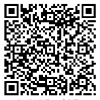CSS3 多媒体查询
CSS3 的多媒体查询继承了 CSS2 多媒体类型的所有思想: 取代了查找设备的类型,CSS3 根据设置自适应显示。
媒体查询可用于检测很多事情,例如:
viewport(视窗) 的宽度与高度
设备的宽度与高度
朝向 (智能手机横屏,竖屏) 。
分辨率
目前很多针对苹果手机,Android 手机,平板等设备都会使用到多媒体查询。
多媒体查询语法
多媒体查询由多种媒体组成,可以包含一个或多个表达式,表达式根据条件是否成立返回 true 或 false。
@media not|only mediatype and (expressions) {
CSS-Code;
}
如果指定的多媒体类型匹配设备类型则查询结果返回 true,文档会在匹配的设备上显示指定样式效果。
除非你使用了 not 或 only 操作符,否则所有的样式会适应在所有设备上显示效果。
not: not是用来排除掉某些特定的设备的,比如 @media not print(非打印设备)。
only: 用来定某种特别的媒体类型。对于支持Media Queries的移动设备来说,如果存在only关键字,移动设备的Web浏览器会忽略only关键字并直接根据后面的表达式应用样式文件。对于不支持Media Queries的设备但能够读取Media Type类型的Web浏览器,遇到only关键字时会忽略这个样式文件。
all: 所有设备,这个应该经常看到。
实例1:
<!DOCTYPE html>
<html>
<head>
<meta charset="utf-8">
<title>php.cn</title>
<style>
/* 小于200px*/
@media only screen and (max-width:200px ) {
#p{
background: red;
}
}
/* 大于300px*/
@media only screen and (min-width:300px ) {
#p{
background: yellow;
}
}
</style>
</head>
<body>
<p id="p">小于200px背景变红色大于300px背景为黄色</p>
</body>
</html>实例2:
<!DOCTYPE html>
<html>
<head>
<meta charset="utf-8">
<title>php.cn</title>
<style>
/body{background:blue;}/*宽度500px-800px之间+高度100px-400px之间 蓝色*/
@media screen and (max-width:500px){body{background:green;}}/*宽度小于500px时 绿色*/
@media screen and (min-width:800px){body{background:red;}}/*宽度大于800px时 红色*/
@media screen and (max-height:100px){body{background:yellow;}}/*高度小于100px时 黄色*/
@media screen and (min-height:400px){body{background:pink;}}/*高度大于400px时 粉色*/
</style>
</head>
<body>
<p>效果演示,请缩小/扩大浏览器的窗口大小注意背景色的变化。逻辑如下:</p>
<p>/*宽度500px-800px之间+高度100px-400px之间 蓝色*/</p>
<p>/*宽度小于500px时 绿色*/</p>
<p>/*宽度大于800px时 红色*/</p>
<p>/*高度小于100px时 黄色*/</p>
<p>/*高度大于400px时 粉色*/</p>
</body>
</html> 
















我喜欢晴天
做适配的啊,明白了
8年前 添加回复 0